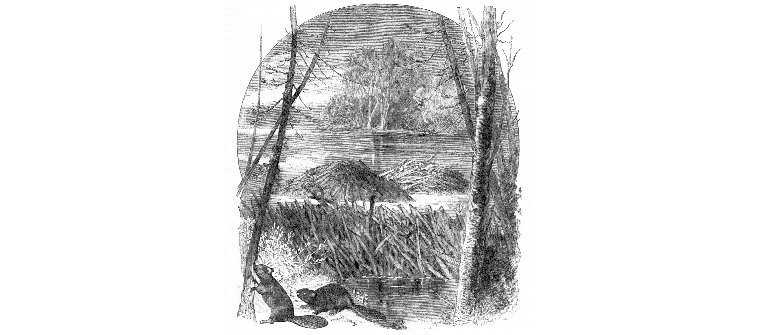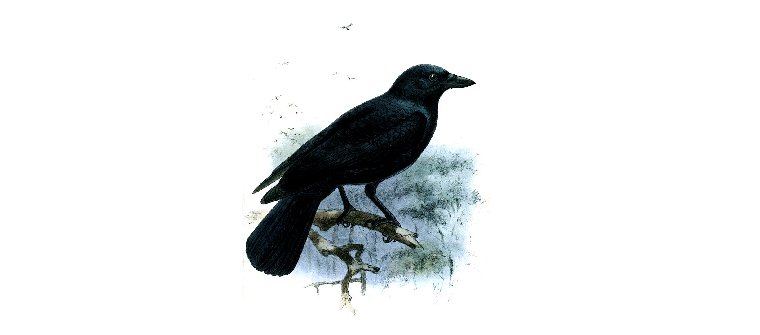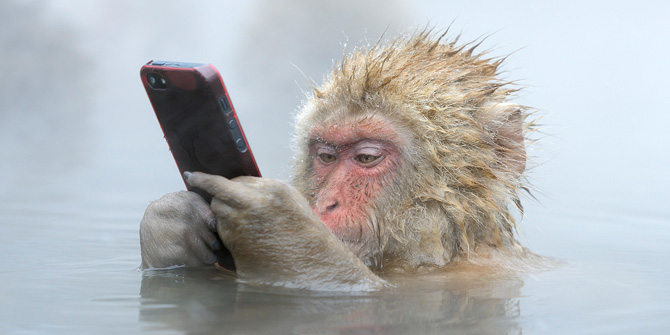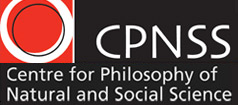What separates human beings from their animal ancestors? Andrew Buskell examines the concept of “cumulative culture”.
There are many traits and behaviours that make humans exceptional. Some of these traits and behaviours are easy to identify. To take one example, humans communicate linguistically in a way that is strikingly different from our great ape ancestors. And while there are other differences between humans and animals, many are hard to identify and quantify. Over the last fifty years or so, however, researchers have developed models, experimental paradigms and tests that provide greater and greater insight into what makes human beings exceptional.
One important difference between humans and animals is the extent to which humans employ huge amounts of knowledge and technology. While it is true that some animals build structures (think, for instance, of beaver dams) and that some use tools (with the New Caledonian crow being an exceptional instance), humans not only have a large and varied tool-kit, but also use this tool-kit to survive in almost all the terrestrial territories of the globe.
A large number of psychologists, primatologists, and biological anthropologists are now attempting to understand how and why humans establish and maintain technology (what I’ll call “innovations”) and knowledge over time. The label that they use to capture this phenomenon is cumulative culture. Cumulative culture is another interesting difference between humans and animals. But what exactly does “cumulative culture” mean? What is it that is accumulating here?
When we turn to look at what various people working on cumulative culture mean by the concept, we find that they tend to pick out very different kinds of phenomena. But if researchers use different definitions of cumulative culture, it is reasonable to question whether they are also identifying different underlying structures. There is room for philosophy here to help distinguish the various dimensions of cumulative culture, and to make clear, at least in the broad strokes, what different kinds of structures might be at work.
In what follows, I briefly highlight three different ways that the cumulative culture concept has been used by (predominantly) psychologists and biological anthropologists, showing that they don’t quite pick out the same phenomena. Demonstrating these different kinds of accumulation is one step towards a more fine-grained scientific analysis of what separates our human psychology from our animal ancestors.

Illustration of a Beaver dam, 1884. Public Domain
Cumulative Culture as Increasing Complexity
One way in which human innovations seem to differ from those we see in animals is their complexity. Consider Global-Positioning System (GPS) Satellites. GPS Satellites are incredibly complex innovations; an artefact that could not have sprung complete from one inventor’s head. Instead, such a complex thing is the result of years and years of tinkering, with gradual improvements to design, telemetry , physics, and material science.
The increasing complexity of innovations seems to be a peculiarly human trait, and one that seems to rely on a special ability for faithful copying. Without faithful copying (the story goes) we would lose accumulated innovations of the past, never being able to add more complex bells and whistles to the artefacts that we have. It seems like humans have a psychology that allows for “ratcheting”, or accumulating complexity: we can maintain innovations in our communities and slowly “ratchet” up what these artefacts can do.
Cumulative Culture as Increasing Number of Innovations
Another striking feature of human beings is that as well as our having so many innovations, we also maintain them in our societies for long periods of time. Thus, another way that culture accumulates is in terms of the sheer number of innovations. But how do we explain this ability to grow knowledge – to grow our culture?
There are plenty of capacities that are at play here, but a crucial kind of ability seems to be that of inventing and combining innovations. What is required for these capacities? One interesting feature seems to be the ability to break down tasks and innovations, and to have the psychological capacities to mix and match and repeat various component parts of tasks and innovations. This ability to imaginatively, as well as physically, try out the combinations and permutations of various innovations seems to rely on cognitive abilities for decomposing tasks into constituent parts, and manipulating these parts in a variety of ways.
Cumulative Culture as Increasing Cultural Adaptiveness
So far, I have only hinted at the use of our innovations and knowledge, only saying that it somehow allows human beings to survive in an extremely wide range of environments. One important aspect of culture that seems to follow from such observations is the way in which culture has helped the human race to succeed, to outbreed other mammals of a similar size. This is to treat culture as something akin to a biological adaptation, as something that can generate a “fit” between populations and their environment.
Take spices as an example. Several spices have antimicrobial properties – others are fungicides. There is some suggestive evidence that recipes, passed down over time, incorporate (tacit) knowledge about these properties. Spices are added in combination to increase their antimicrobial effect and at different times in the cooking process, seemingly sensitive to the heat-resistance of their antimicrobial properties.
How can culture have this feature of increasing adaptiveness, where recipes can have increasingly effective antimicrobial properties? Here, researchers seem to identify two important features. First, the size of one’s population is important. The more individuals in one’s population, the more likely it is that (a) knowledge about how to make the innovation will be widely distributed, (b) there will be ample opportunities to learn such innovations and (c) new and varied innovations will be generated, with the chance of an even better one coming along.
Second, we need someway of telling when things work from when things don’t. Even with widely distributed and variable innovations, unless individuals can tell which innovations are better (or worse) the population is less likely to generate innovations with an adaptive fit. This capacity to tell good from bad is likely to rely on some cognitive machinery – though here there is a serious debate as to what this machinery might be.

Illustration of the New Caledonian Crow (Corvus moneduloides), 1887. Public Domain
Let me sum up. Cumulative culture is something that marks human beings as exceptional from other animals. But understanding this intricate phenomena, and how it came about is complex. I have highlighted three ways individuals interested in cumulative culture have used the term, picking out three broad kinds of accumulation: the complexity of an innovation, the number of innovations and the adaptiveness of an innovation. Each, I’ve shown, seems to rely on very different kinds of underlying structures.
What does this mean for the term “cumulative culture”? We might think that if it picks out very different kinds of accumulation, each resulting from different underlying structures, that the term isn’t very useful. Maybe we should get rid of it.
My own view here is under development, but I think we should keep “cumulative culture”. There is something in common between these three senses of “accumulation”: they all structure the heritable variation available for subsequent generations. It might be the case that cumulative culture is picking out what evolutionary theorists call evolvability. Cumulative culture might be an investigation into cultural evolvability.
Andrew Buskell is a Fellow in the Department of Philosophy, Logic & Scientific Method. His research focuses on philosophical issues surrounding the science of human evolution, particularly the evolution of human psychology.
Further reading
- Richerson, P. & Boyd, R. (2005). Not By Genes Alone: How Culture Transformed Human Evolution. Chicago: University of Chicago Press.
- Henrich, J. (2015). The Secret of Our Success: How Culture is Driving Human Evolution, Domesticating Our Species, and Making Us Smarter. Princeton: Princeton University Press
- Tomasello, M. (1999). The Cultural Origins of Human Cognition. Cambridge, MA: Harvard University Press
Audio recording
- Darwinism and the Social Sciences. Podcast of an event organised by the Forum, chaired by Andrew Buskell and featuring Prof Tim Lewens, Dr Alex Mesoudi and Prof Christina Toren.
Featured image credit: Marsel van Oosten





This is an interesting post, I have a keen interest in the subject of the physiological differences between humans and our more primitive counterpart. The question persistent in my mind is are humans capable of isolating our species separate from our animal cousins mentally. The main theme running in mind is the idea the self, humans are to be (act) the part of the ‘human’ a concept created by ourselves as a guide to individualize ourselves from the animal kingdom as a whole. I guess my question is, are we capable of doing this or do we lack the needed evolvement of our species?
P.S great post, very informant